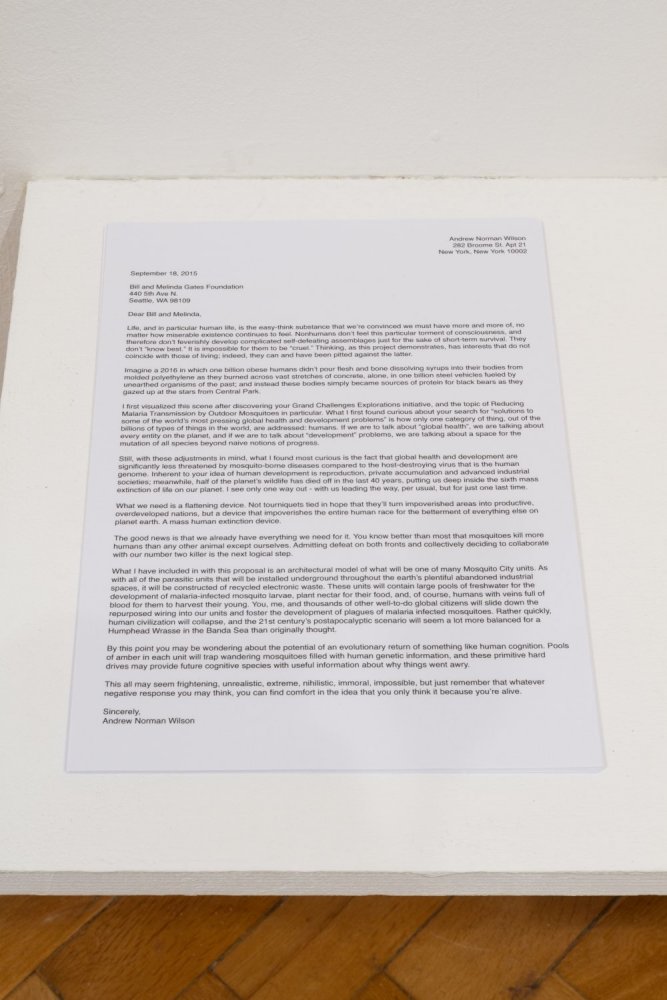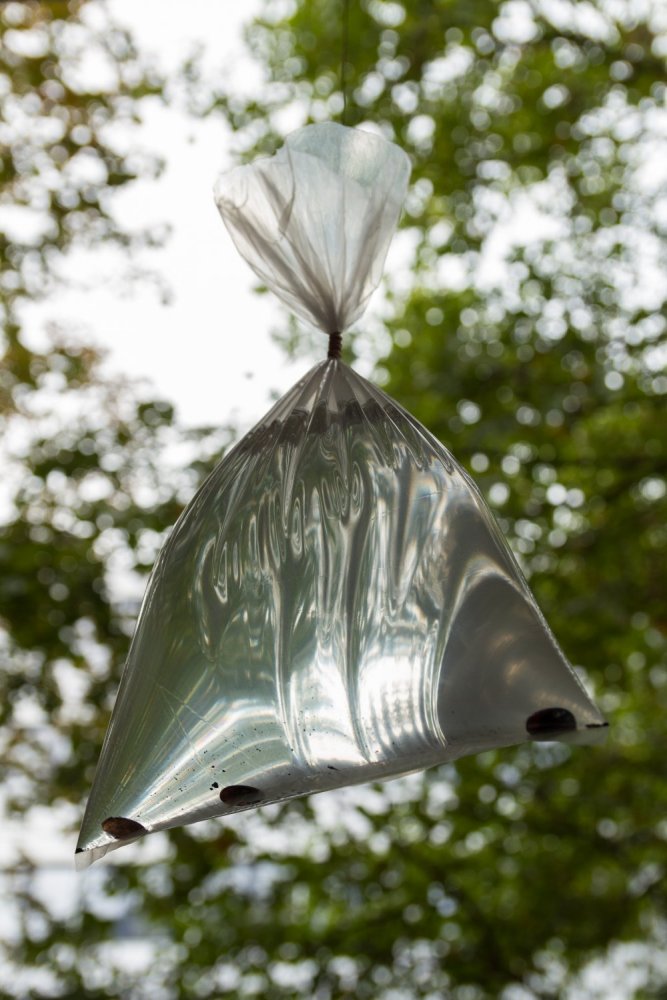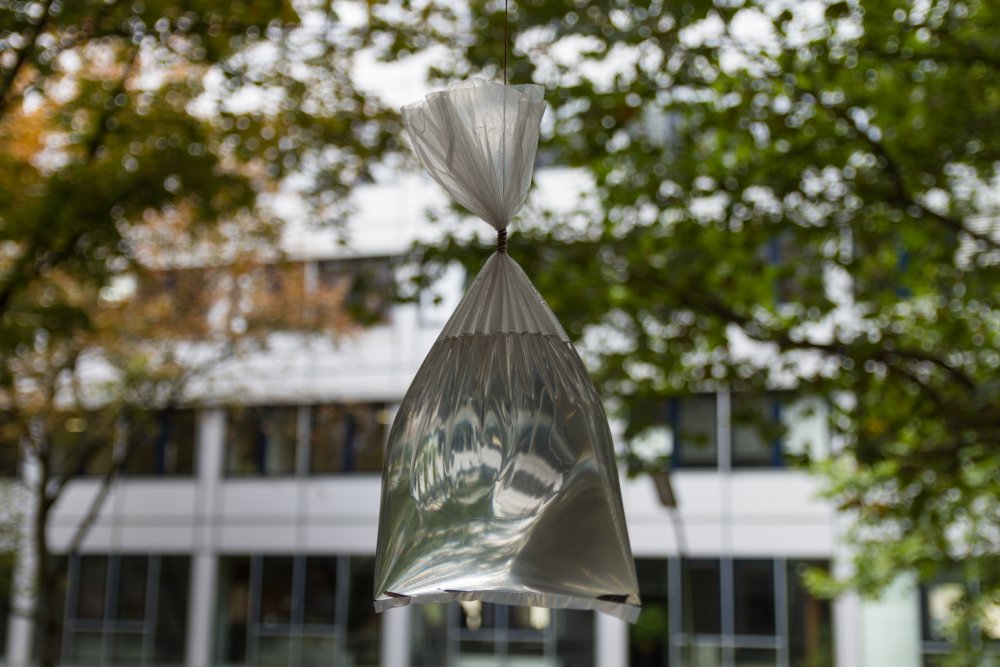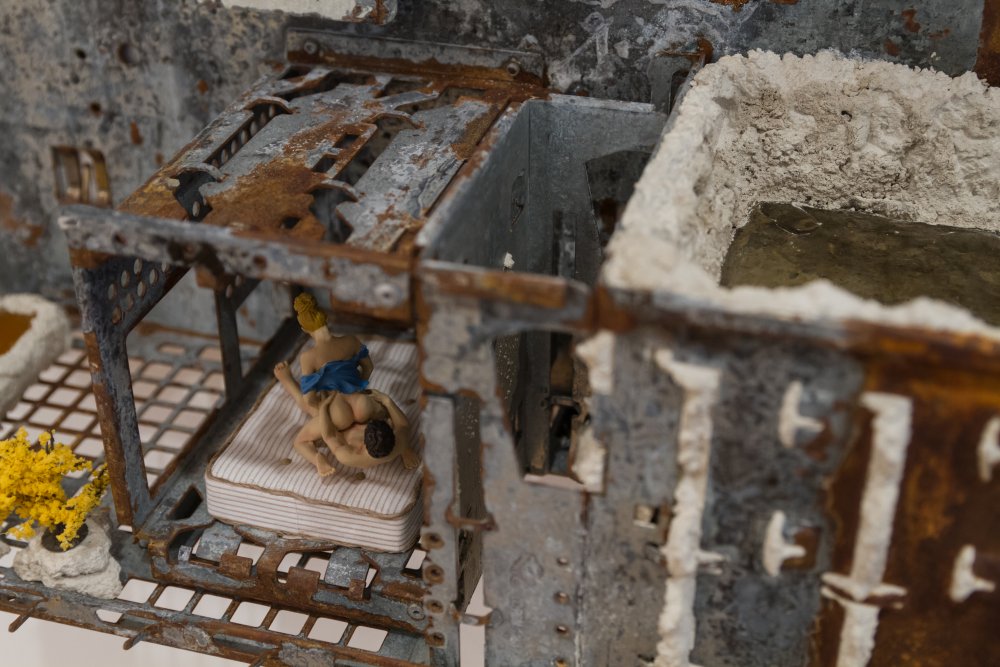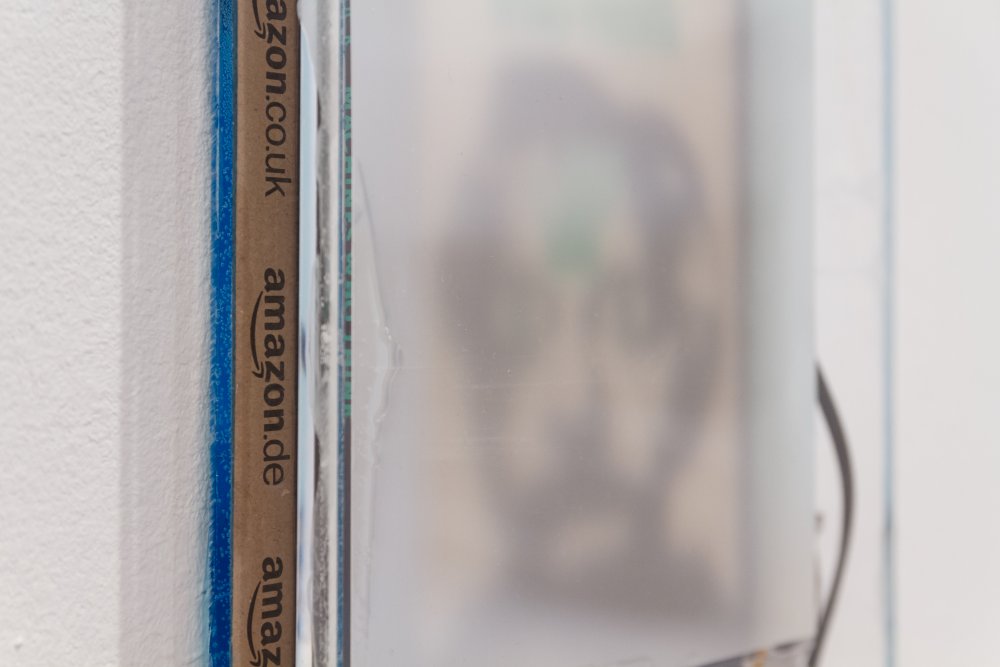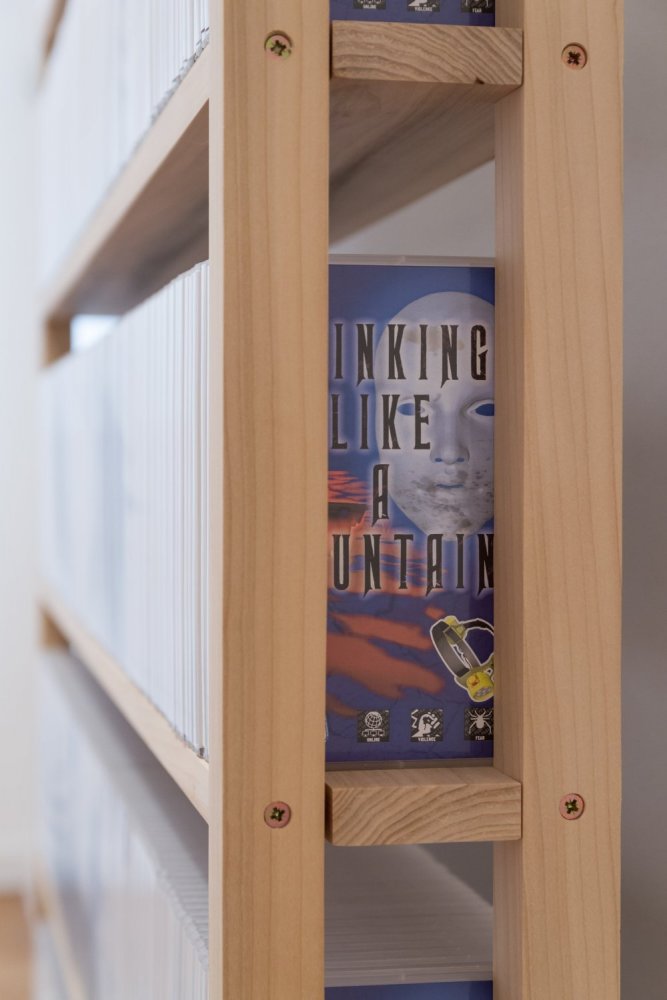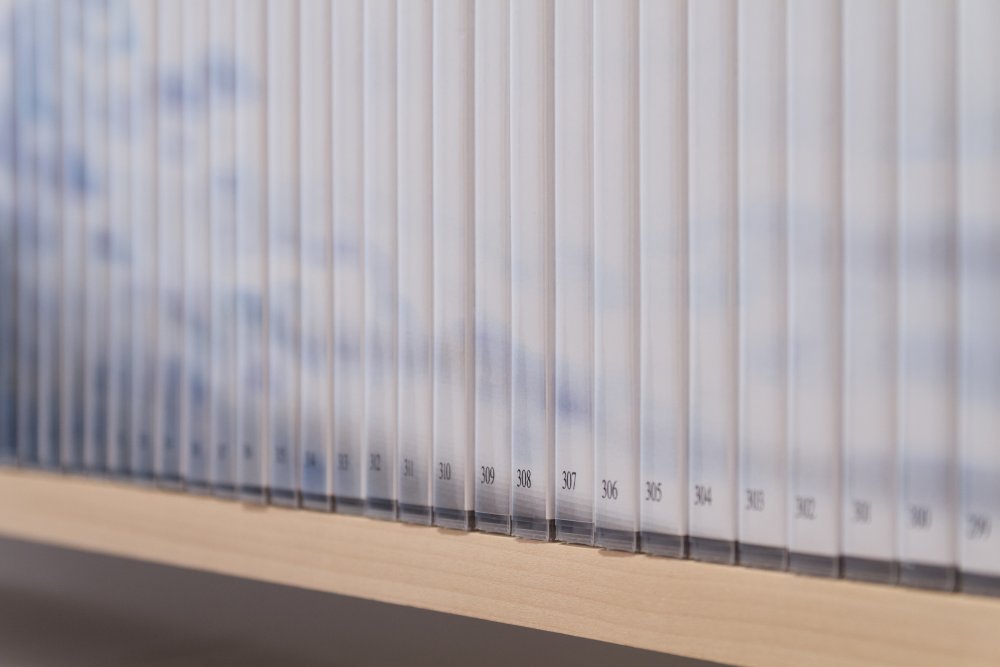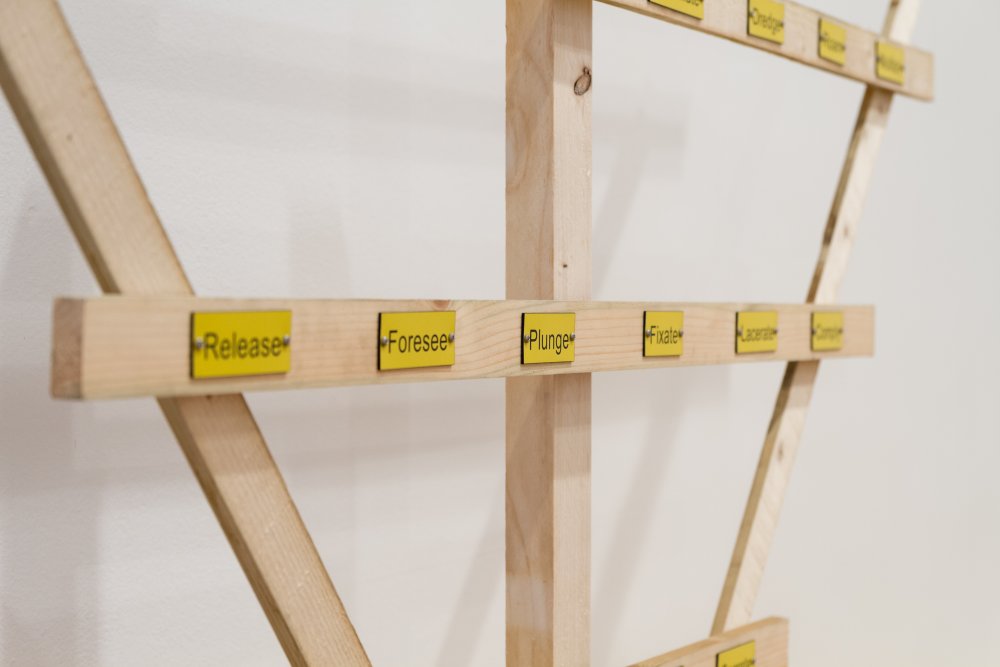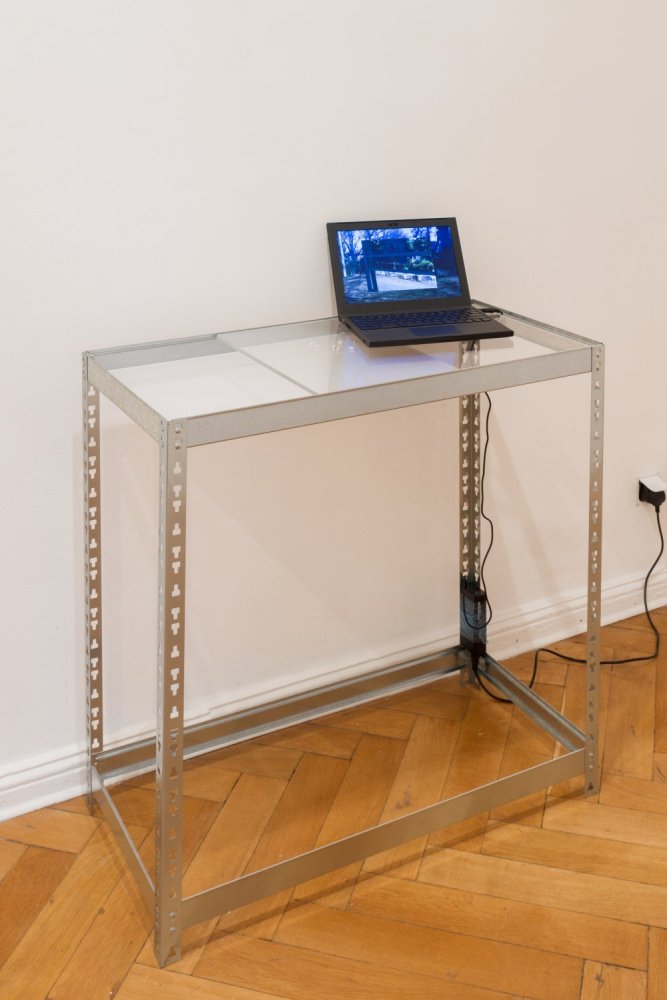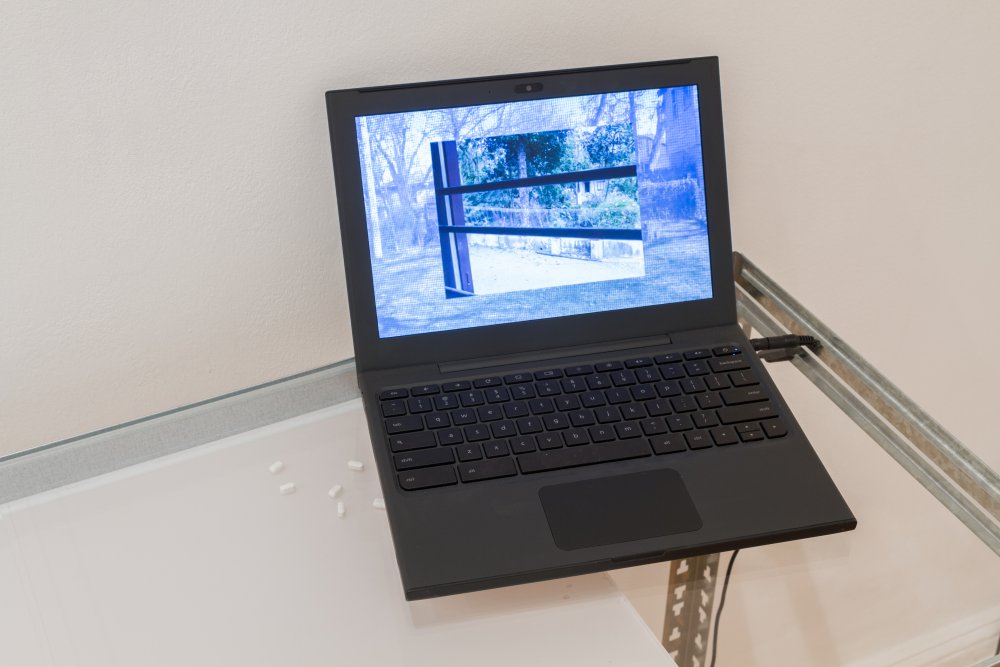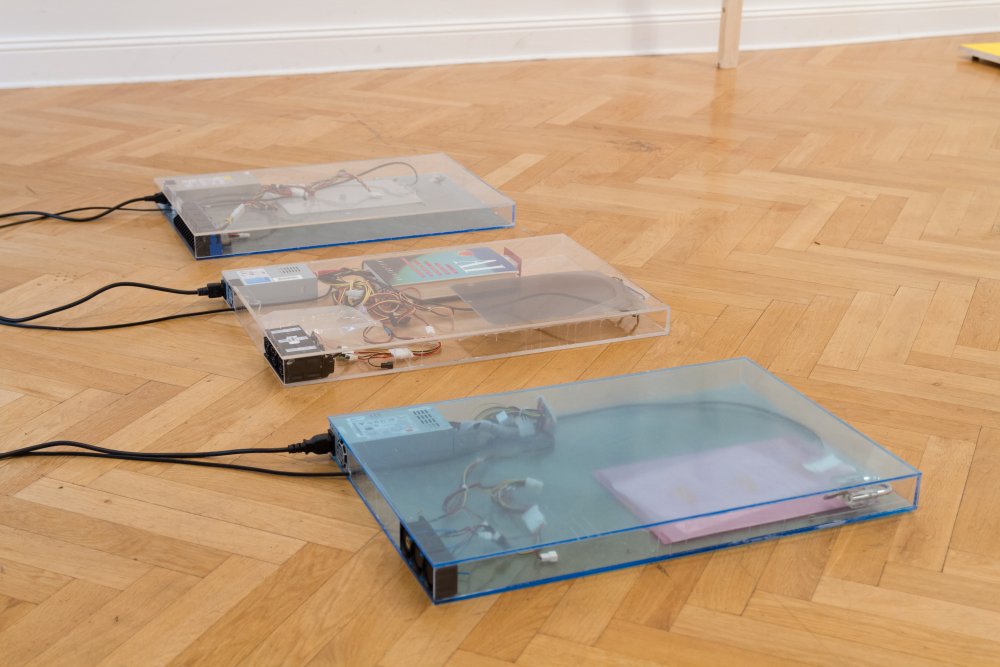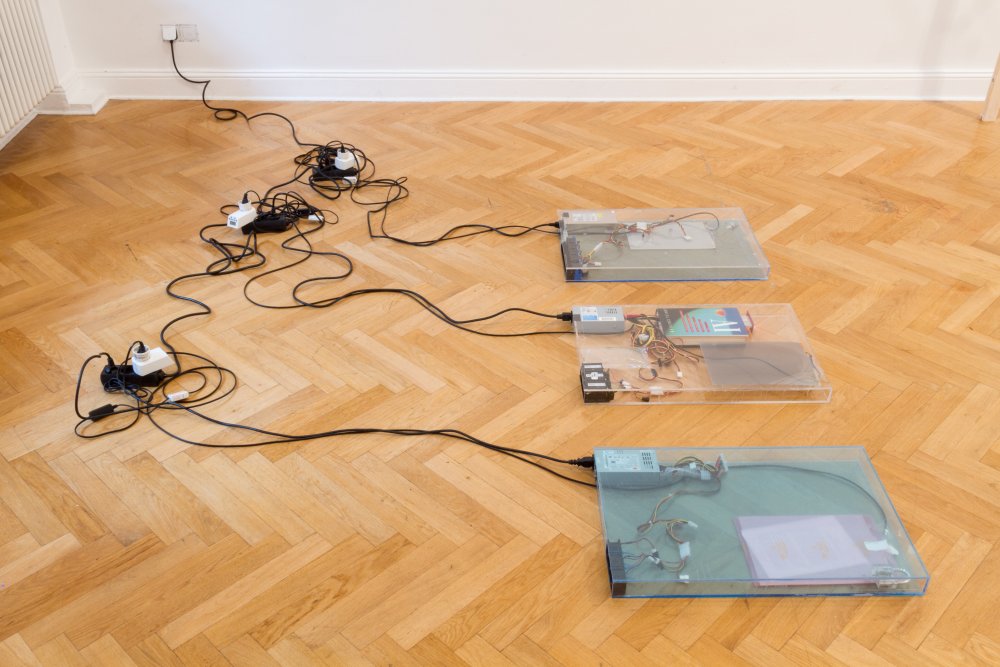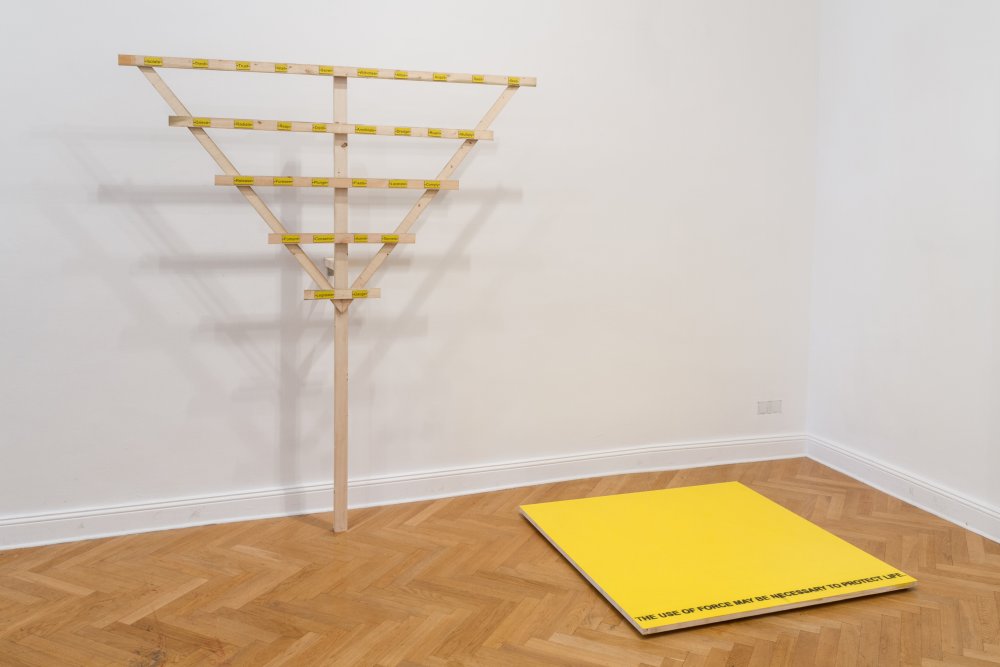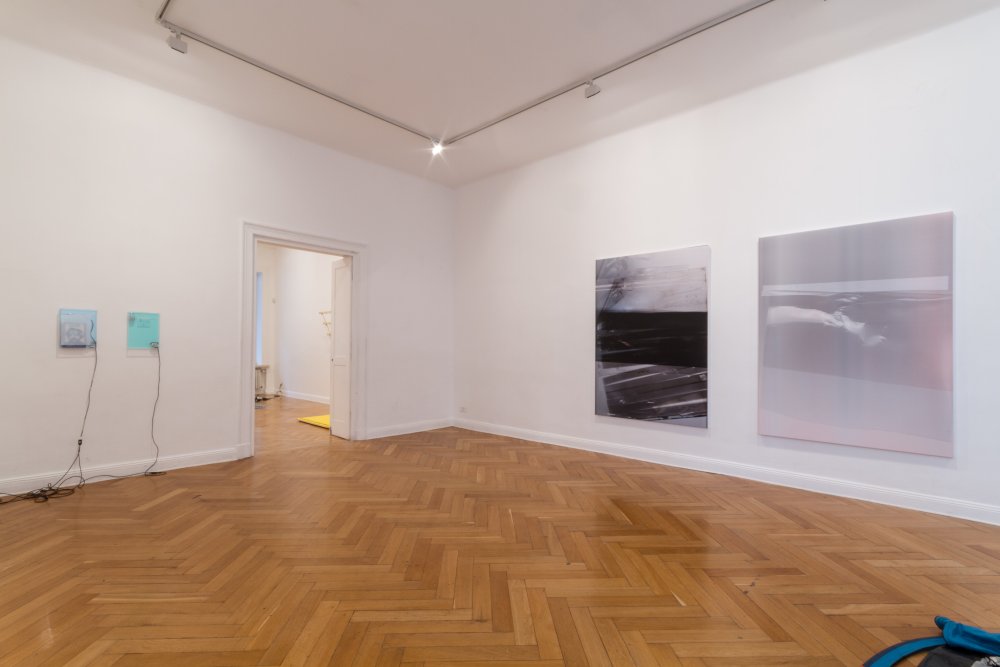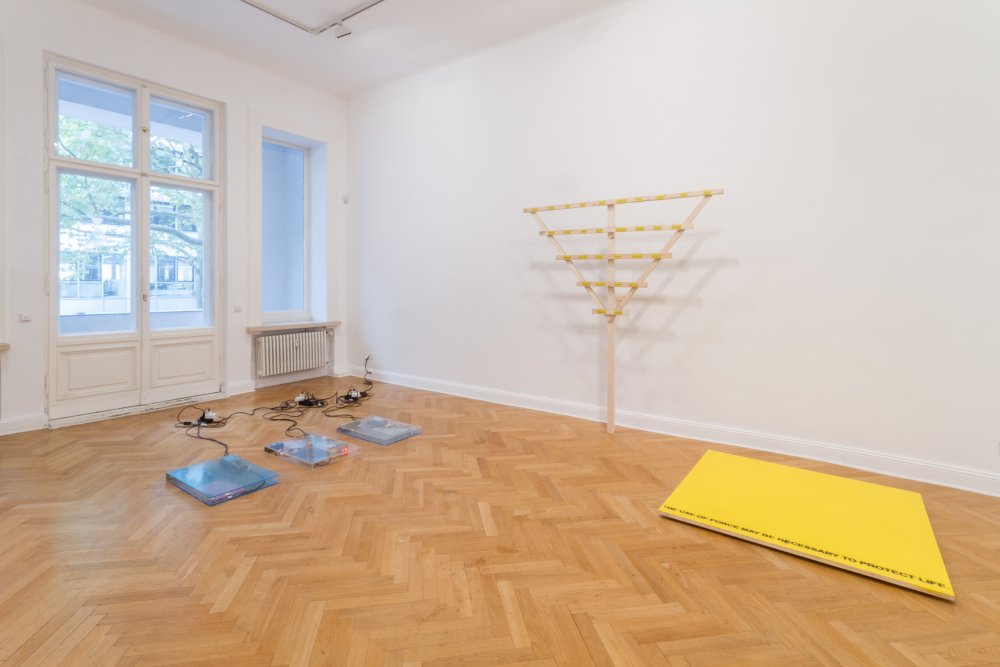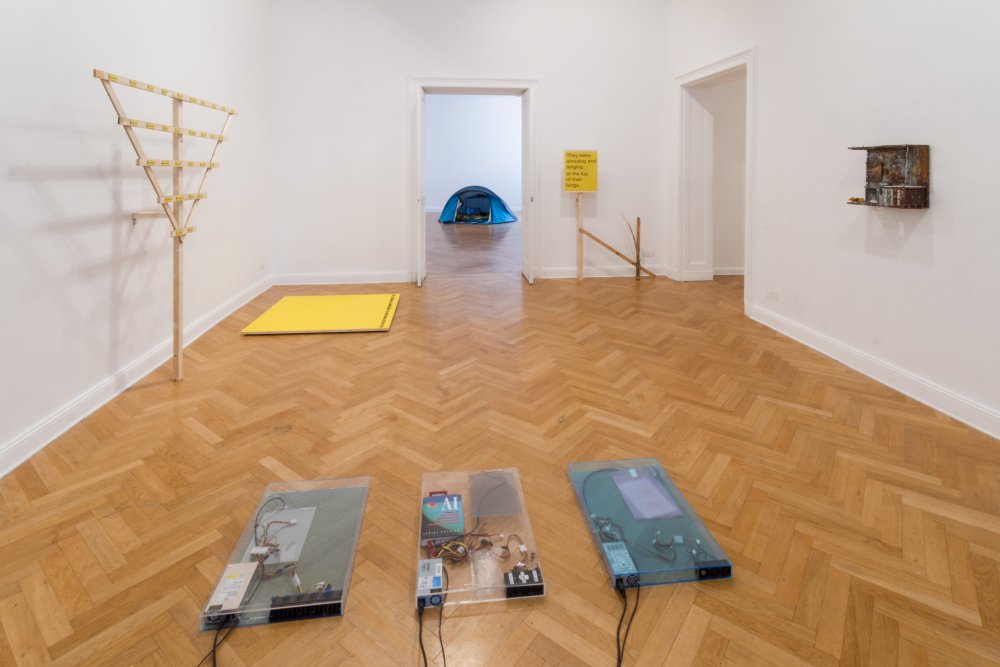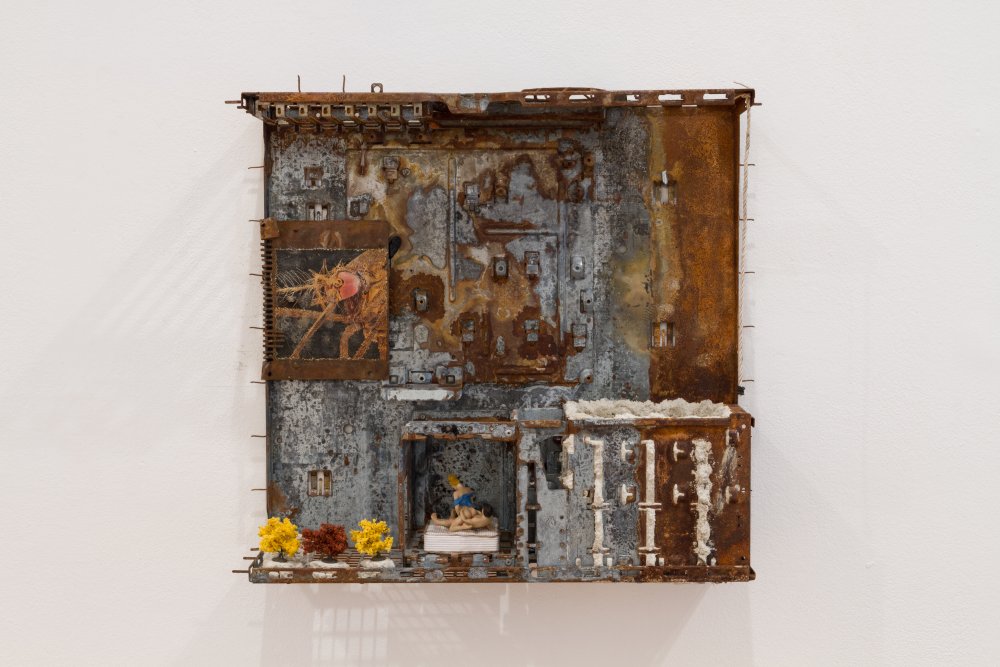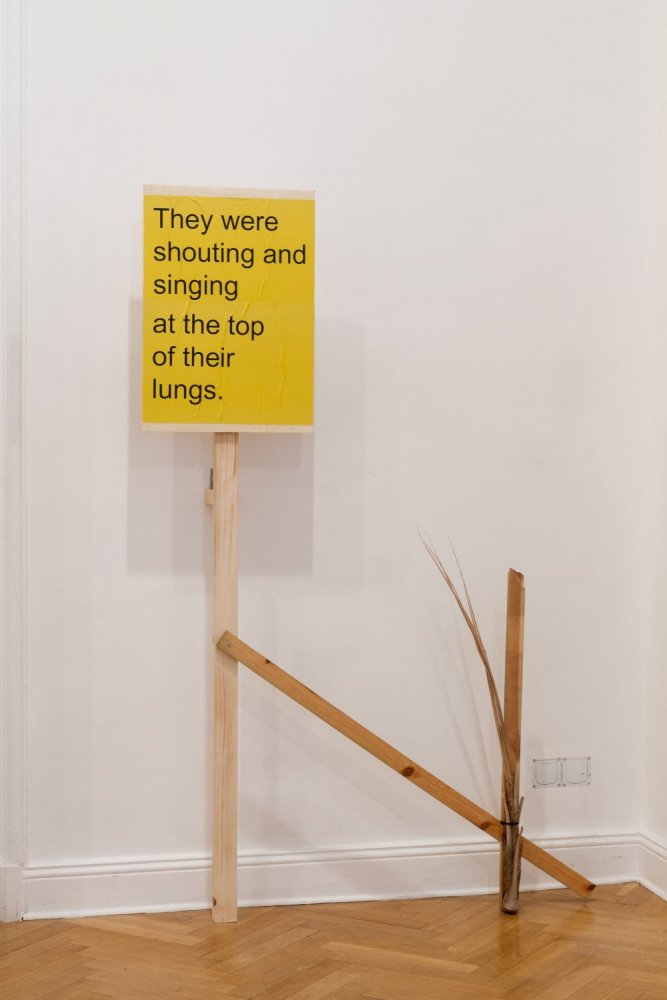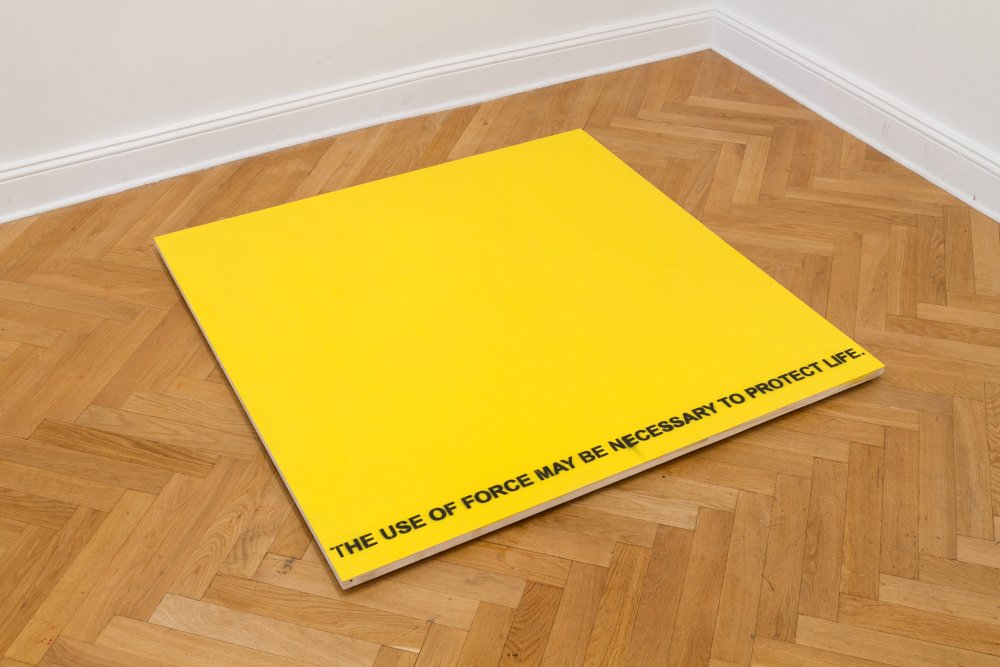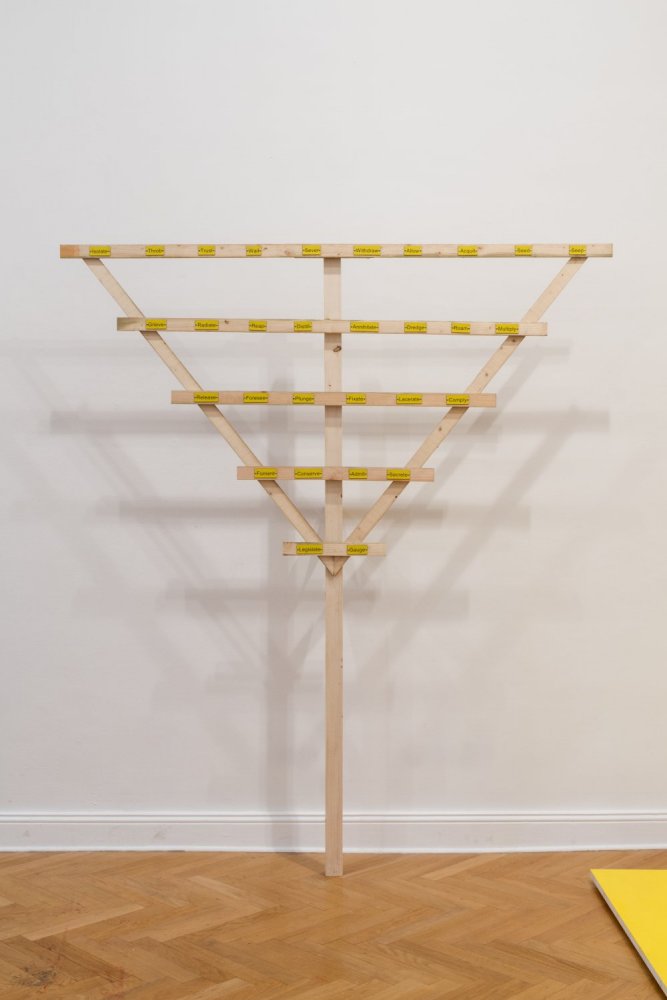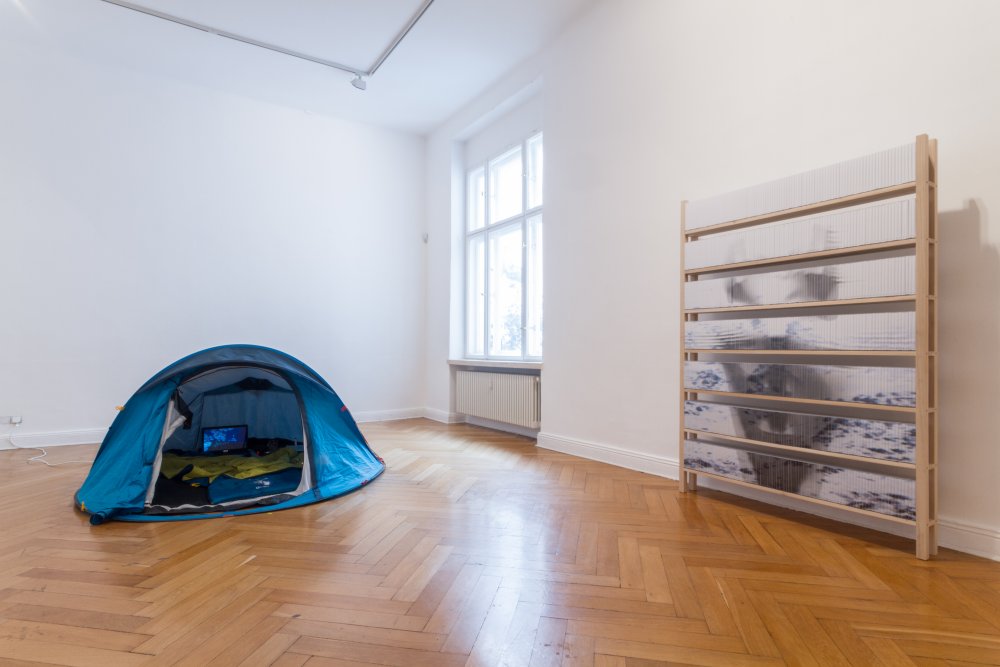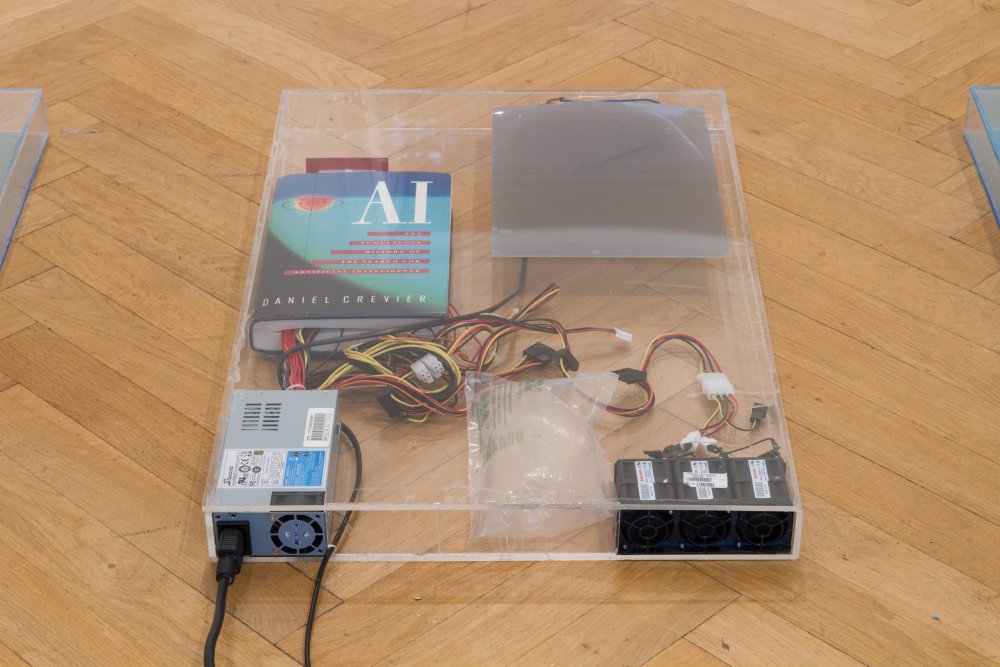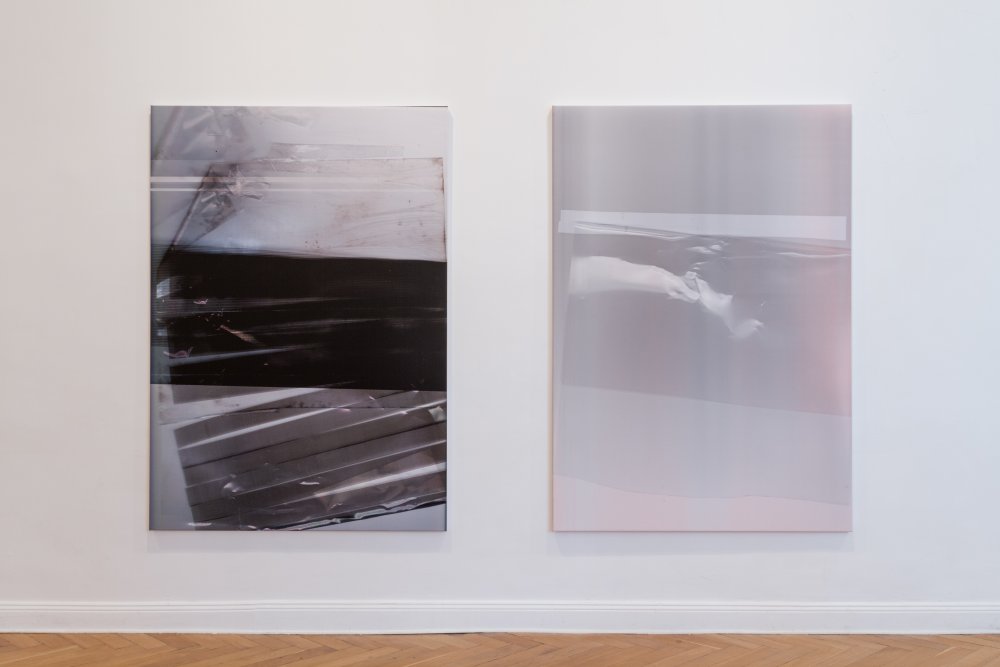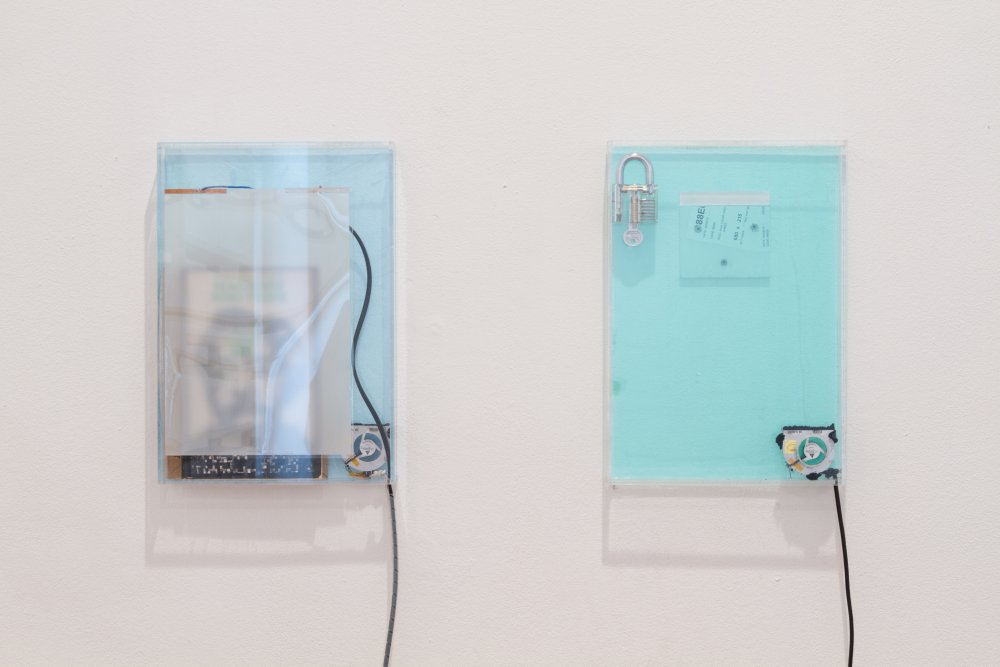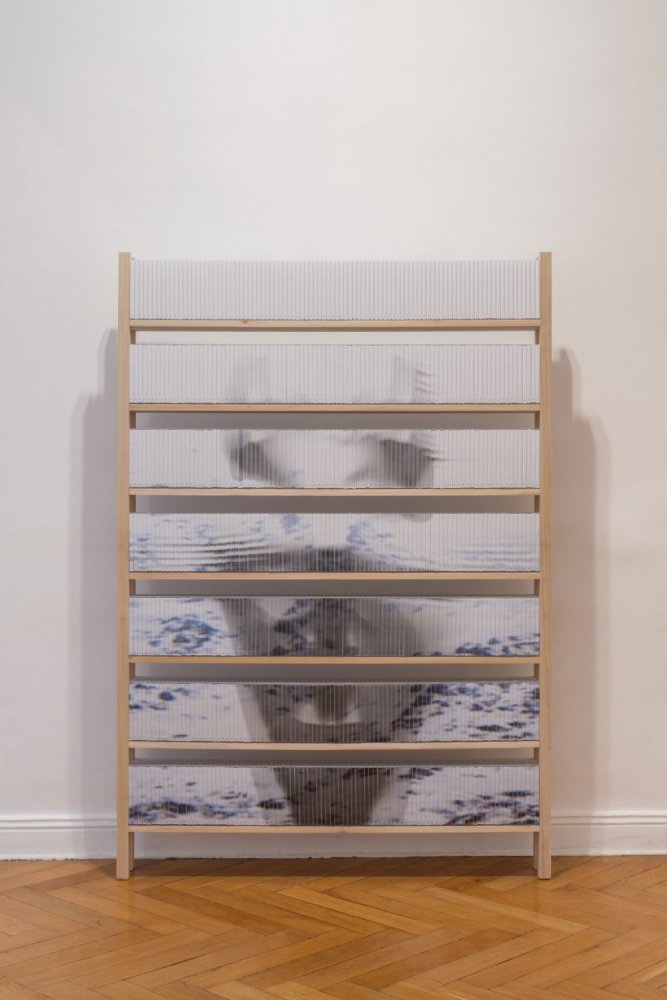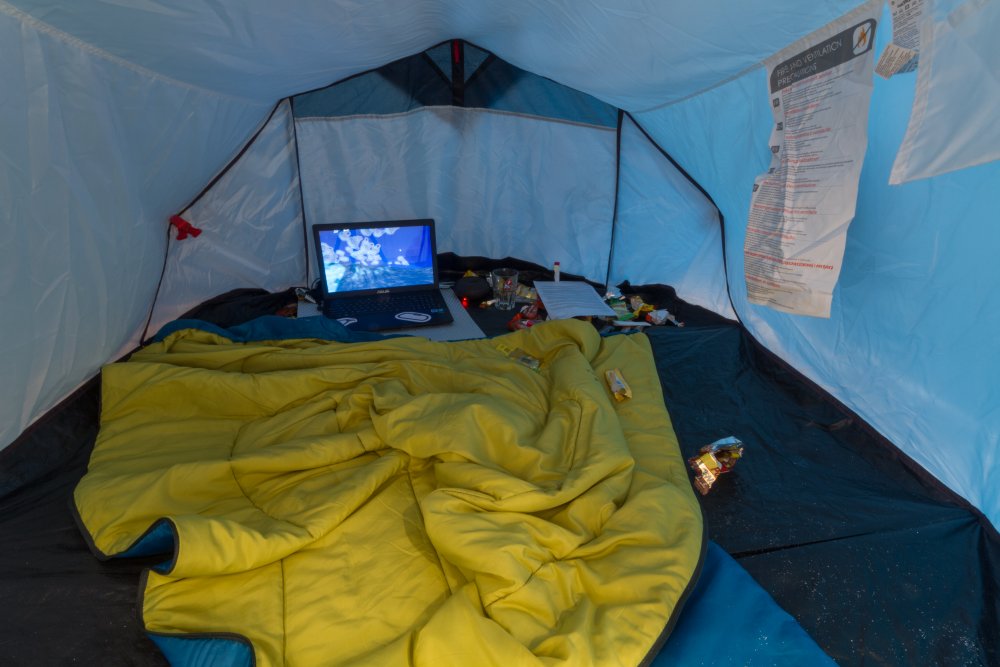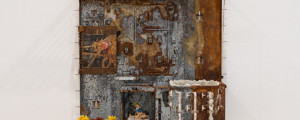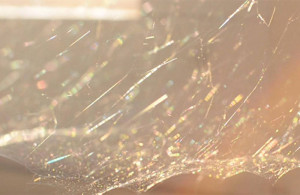Abjects, a group exhibition at Berlin’s Import Projects, curated by Franziska Sophie Wildförster, brought together artists’ Eloïse Bonneviot, Emily Jones, Paul Kneale, Yuri Pattison and Andrew Norman Wilson, which ran from September 19 to October 25, 2015. Julia Kristeva’s theory of the abject is summarised in the press release, acting as a foundation from which the works depart and expand on a contemporary experience of the vulnerable body. Shifting from a focus of disgust and revulsion at the raw corporeal materiality, the exhibition finds disturbance within the disparity between a disembodied, infinite connectedness of the immaterial and the opaque constraints produced by the digital economy. The works reflect on the hidden pathways that lurk under, above and in between a contemporary experience mediated within the age of technology and information.
The installation is clean and institutionalised. Pattison presents us with a makeshift desk made of steel shelving titled ‘productivity table’. Six Modafinil tablets (used for combatting fatigue and distraction) are laid out beside a Google prototype computer. The exposed aesthetic extends into ‘dust, scraper, fan .1-5′; a set of five rectangular acrylic boxes placed on the wall and floor of the gallery. Jones’ ‘The Draining of the Mesopotamian Marshes of Iraq’ combines a picketing aesthetic with factual and instructional language within three separate sculptural assemblages. Sitting between a cenotaph and a memorial, a yellow sign that reads, “They were shouting and singing at the top of their lungs” is held up by bits of wood clumsily nailed together. Beside that lies another yellow sign quietly placed on the floor that announces, “The use of force may be necessary to protect life.”

Framed between the signs in the first room, Bonneviot’s tent sits in the doorway of the second. Titled ‘Thinking Like A Mountain—Limited’ the installation fills the small personal space with camping gear, energy bar wrappers, notes of paper and a laptop playing a video game. The recreation is unclear but the aesthetics combine the act of trekking, whether in camping, protesting or the passing of time in a ‘gaming hole’.
Also strongly focusing on material and its residue, Wilson’s ‘Global Mosquito City Proposal’ uses the hardware of a computer to create a sci-fi housing scenario. Two dolls are propped on top of each other in a sexual act. Computer parts, concrete, resin, oil paint, pepper, plastic, acrylic paint, foam and cotton are forced together into an abrasive dollhouse. Beside it, a proposition to Bill and Melinda Gates asks for a contribution of “their blood to malaria mosquito larvae that could potentially be nurtured in this computer-habitat to erase all human beings around the world.”
Outside the window, a bag of water hangs delicately. Titled ‘Insect Repellant’ it encases hydrochloric acid, liquified coins, and copper. In contrast to the sic-fi machine invested manifesto, Kneale’s ‘Aphasia Tags and Performative Empathy’ presents abstract images; the content barely recognisable. Light and hopeful, the images are layers of time made by using the ‘scan’ function of a printer, leaving the lid open. The mechanics replace the intent, and the painterly result is naturalistic in its use of space, daylight and floating particles.**
Exhibition photos, top right.
